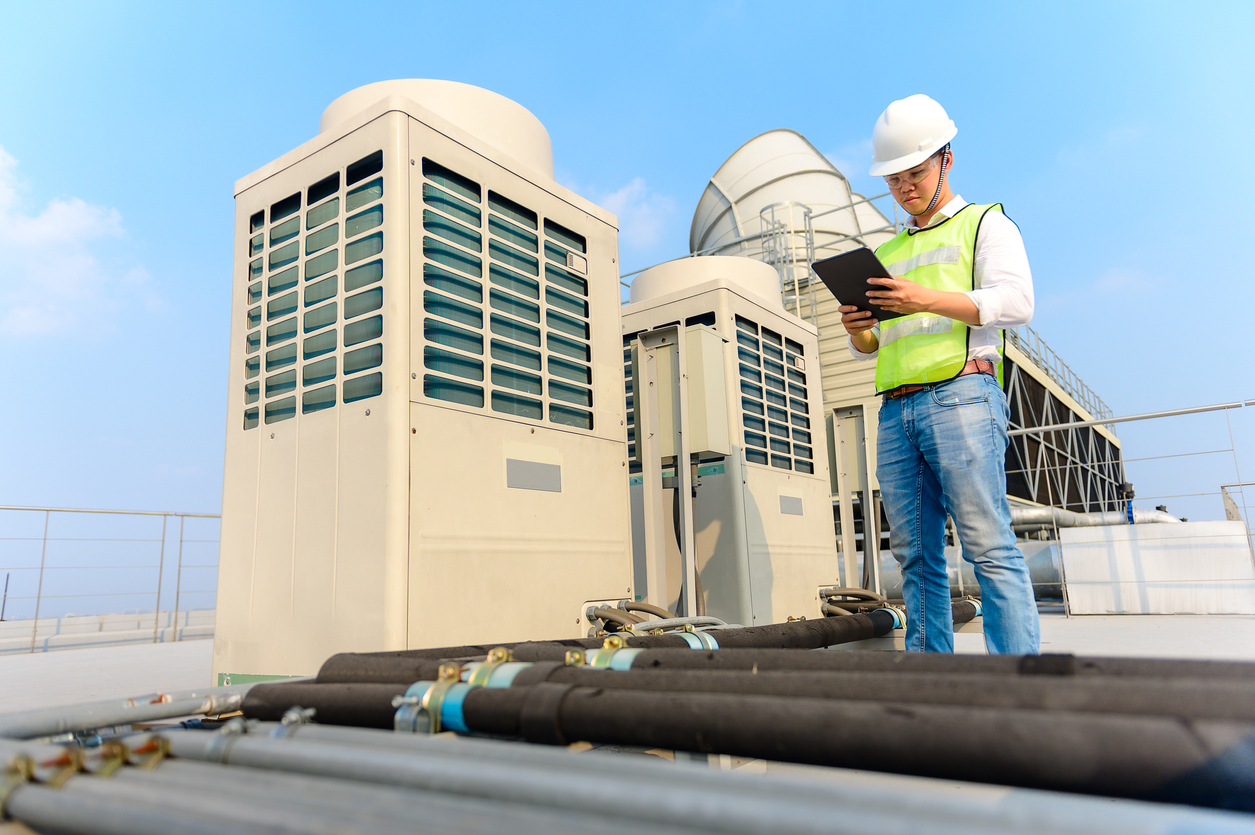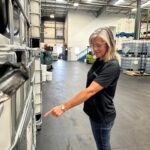
Preparing Your Cooling Tower for Startup: A Comprehensive Checklist
Many HVAC evaporative cooling systems are idle or off throughout the winter months and are often drained to prevent freezing. These extended shutdowns provide excellent conditions for deposits to form and bacteria to grow. When these systems are put back into service, it is paramount that you follow certain cooling tower start-up steps with best practices. A proper cooling tower startup is essential to enhance the efficiency of the cooling tower system and to reduce the risk of corrosion and scaling.
Why Proper Cooling Tower Startup is Important
Enhance System Efficiency
During a cooling tower startup, it’s essential to ensure that the tower is running at optimal conditions. This includes setting the correct water flow rate, fan speed, and other operational parameters. When these parameters are not set correctly, the cooling tower’s performance can be impacted, resulting in reduced system efficiency, increased energy consumption, and higher operating costs.
Reduce Corrosion and Scaling
Cooling towers are susceptible to corrosion and scaling, which can lead to a range of issues, including reduced heat transfer efficiency, equipment damage, and reduced lifespan. A proper cooling tower startup procedure includes adding corrosion and scaling prevention like scale inhibitors to the cooling water, which helps prevent the formation of scale and prevent corrosion.
Prevent Microbial Growth
Cooling towers provide a suitable environment for the growth of bacteria, algae, and other microorganisms. When left untreated, these microorganisms can cause fouling and biofilm formation, which can impact the cooling tower’s efficiency, and energy efficiency, and result in poor water quality. A proper cooling tower startup includes a treatment program designed to prevent the growth of microorganisms and maintain good water quality.
A proper cooling tower startup procedure is crucial to enhance the efficiency of the cooling tower system, reduce the risk of corrosion and scaling, and prevent the growth of microorganisms. By following a well-defined startup procedure, you can ensure that your cooling tower operates efficiently, effectively, and reliably, with minimum risk of issues such as equipment damage, increased energy consumption, and poor water quality.
6 Steps for Cooling Tower Startup
When starting up the system for cooling operation, some basic steps should be completed to ensure peak mechanical performance for the duration of the cooling season, and to verify that best practices for Legionella prevention are in place. In addition to the recommendations below, each cooling tower manufacturer may also have seasonal preventative cooling tower maintenance requirements for mechanical components such as fans and controls. A typical step-by-step walkthrough of a proper cooling tower startup looks like this:
Step 1: Pre-Startup Inspection
Before starting up the cooling tower, it’s important to conduct a thorough inspection of the tower and its components. This includes checking for leaks, inspecting the tower structure and its supports, and ensuring that all valves and instrumentation are properly installed and functional. This step is critical to identify any potential issues that could affect the startup process or lead to equipment failure later on.
Step 2: Fill the Basin
The next step is to fill the cooling tower basin with water. The water source should be clean and free of contaminants, and the water level should be maintained at the recommended operating level. This step is essential to ensure proper water flow and to prevent damage to the equipment due to dry running.
Step 3: Start Circulating Pumps
Once the basin is filled, the circulating pumps can be started. The pumps should be started one at a time and checked for proper operation. This step is crucial to ensure proper water flow and to prevent issues such as cavitation or low water flow.
Step 4: Add Treatment Chemicals
As the circulating pumps are started, cooling tower chemicals such as biocides, corrosion inhibitors, and scale inhibitors should be added to the water. These chemical treatments are essential to prevent microbial growth, corrosion, and scaling, which can cause damage to the cooling tower equipment. This step is critical to maintaining good water quality and protecting the equipment from damage.
Step 5: Adjust Flow Rate and Fan Speed
Once the circulating pumps are running and the water treatment chemicals are added, the water flow rate and fan speed can be adjusted. These settings should be adjusted based on the specific design and operating parameters of the cooling tower. This step is important to optimize the cooling tower’s performance and ensure maximum efficiency.
Step 6: Monitor Operation
After completing the startup process, it’s important to monitor the cooling tower’s operation continuously. This includes monitoring the water quality, temperature, and pressure, and checking for any abnormal conditions such as high vibration or unusual noise. This step is critical to identifying any issues that may arise during the startup process and ensuring the proper functioning of the cooling tower.
A proper cooling tower startup involves a series of critical steps, including a pre-startup inspection, filling the basin, starting the circulating pumps, adding treatment chemicals, adjusting the flow rate and fan speed, and monitoring operation. Each of these steps is essential to ensure the proper functioning of the cooling tower, maintaining good water quality, and preventing equipment damage or failure.
Tips for Cooling Maintenance Throughout the Season
Throughout the cooling season, ongoing maintenance checks beyond water treatment service visits would be desirable to keep the system running at top performance. Here are some tips for cooling tower maintenance throughout the season to ensure that the system runs efficiently:
Regular Inspection
Regular inspection of the cooling tower is essential to detect potential issues before they become significant problems. Schedule routine maintenance and inspection of the cooling tower to identify any leaks, corrosion, or other problems that can negatively impact the performance of the system.
Water Treatment
It is crucial to maintain proper water treatment throughout the season. Make sure that the water treatment program is effective and continues to provide the necessary protection against microbial growth, scaling, and corrosion. Monitor the water quality and adjust the treatment program as needed.
Cleaning
Cleaning the cooling tower regularly is essential to remove debris, sediment, and other materials that can negatively affect the system’s efficiency. Dirt and debris can reduce heat transfer and clog the system, causing it to work harder, use more energy, and cause potential damage to the system. A thorough cleaning of the cooling tower, including the basin, fill, distribution deck, sprays, and other components will help keep the system operating efficiently.
Maintain Airflow
The airflow through the cooling tower must be maintained to ensure proper operation. Debris, dust, and other materials can accumulate on the fan blades or screens, reducing airflow and causing the system to operate less efficiently. Regular cleaning of these components is essential to maintain proper airflow and keep the cooling tower operating at optimal efficiency.
Monitor and Adjust System Controls
Make sure to monitor the system controls regularly to ensure that they are operating as intended. Adjusting the system controls as necessary will ensure the system is operating at optimal conditions and not wasting energy.
In summary, regular maintenance and inspection, proper water treatment, cleaning, maintaining airflow, and monitoring and adjusting system controls are essential to ensure that industrial cooling tower systems operate efficiently throughout the season. Download the PDF version of this checklist to share. Following these tips will help minimize energy consumption, prevent system downtime, and extend the life of the equipment. Contact the Certified Water Treatment Technologists at QualiChem to answer any questions or provide support for your cooling tower startup.



